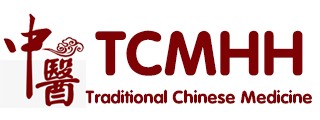NAME
SHENMAI
LOCATION
On the lateral side of the foot, approximately 0.5 cun inferior to the inferior border of the lateral malleolus, in a depression posterior to the peroneal tendons.
Note: locate this point directly inferior to the prominence of the lateral malleolus.
In the depression directly below the lateral malleolus.
NEEDLING
Oblique insertion directed inferiorly, 0.3 to 0.5 cun.
Puncture perpendicularly 0.3 to 0.5 cun.
Moxibustion is applicable.
Slanted insertion pointed downward 0.3 to 0.5 cun, causing local distention and soreness.
COMMAND FUNCTIONS
Confluent (Master) point of the Yang Qiao Mai
Coupled point of the DU channel
Sun Si-miao Ghost point
ACTIONS
Pacifies Interior Wind
Expels Exterior Wind
Calms the Shen
Treats epilepsy
Benefits the head and eyes
Opens and regulates the Yang Qiao Mai
Activates the channel
Alleviates pain
Relaxes the muscle channels
INDICATIONS
Chills and fever
Intermittent fever
Aversion to Wind with spontaneous sweating and a headache
Red eyes
Red, swollen and painful eyes
Eye pain that originates at the inner canthus
Eye pain due to an attack of the Yang Qiao Mai
Epistaxis
Deafness
Tinnitus
Mania-depression
Palpitations
Heart fright
Insomnia
Cold Bi of the lumbar region and hip
Pain of the lumbar region and leg
Difficulty extending and flexing the knee
Straw shoe Wind (redness, swelling and pain of the leg and foot)
Fullness of the chest
Sequelae of Windstroke
Psychosis
Sensation of electricity or excessive energy in the skin
Meningitis
Seizures
Glaucoma
Wind predominant Bi
Fatigue
Disorientation
Vertigo
Lassitude of the lower limbs
Abdominal pain in women
Migraine
Hypertension
Back ache
Aching of the lower extremities
Psychosis
Mental confusion
Mental disorder
Atony of the foot
Tibial paralysis
Quadriplegia
Beriberi
Pain due to Excess of Qi and Blood in women
Tuberculosis
Wind dizziness
Eye dizziness due to Wind
Head Wind
Headache
Lateral and midline headaches
Frontal headache
Thunder head Wind
Opisthotonis
Upward staring eyes
Lockjaw
Epilepsy
Daytime epilepsy
Windstroke with aphasia and hemiplegia
Deviation of the mouth, face and eyes
Conterflow Qi
Stiffness of the nape of the neck
Stiffness and difficulty extending the back
Redness and swelling of the lateral malleolus
Blood and Qi pain in women
Swelling of the neck and axilla
Post cerebrovascular accident hemiplegia and muscle spasms
Occipital neuralgia
Spinal trouble
Meniere's disease
Arthritis of the ankle
Insanity
Post-concussion syndrome
Nasal congestion and discharge
Uterine spasms
Depression
Coldness of the foot
Dyspnea
Dizziness
Lumbago
Lower limb neuralgia
Cerebral hemorrhage
Loss of speech due to stroke
Hemiplegia
Mouth and eyes awry
Bi syndrome of the leg
Contracture of the leg, knee and foot
Dermatosis
Sensation of Qi rising
Rheumatism in the kidneys
Spasms of the uterus
Pain control
COMBINATIONS
| UB-63 Jinmen | LI-10 Shousanli UB-63 Jinmen | ST-41 Jiexi |
| Head Wind Severe headache | Head Wind, visual dizziness and stiffness of the nape of the neck | Madness |
| KI-6 Zhaohai | UB-11 Dazhu GB-39 Xuanzhong KI-7 Fuliu ST-45 Lidui UB-23 Shenshu | GB-31 Fengshi GB-30 Huantiao UB-40 Weizhong UB-60 Kunlun ST-33 Yinshi UB-57 Chengshan |
| Night-time epilepsy Diseases below the ankle Insomnia (reduce Shenmai, reinforce Zhaohai) | Coldness and pain of the bone marrow | Pain of the legs and lumbar region |
| GB-42 Diwuhui GB-38 Yangfu UB-39 Weiyang PC-1 Tianchi GB-41 Zulinqi | SJ-17 Yifeng N-HN-54 Anmian LIV-3 Taichong | SI-3 Houxi SI-2 Qiangu |
| Swelling of the axilla | Meniere's disease | Seizures |
CONTRAINDICATIONS
NOTES
This point expels Cold and Heat and treats one-sided and generalized head Wind. This point has a direct effect on the endocrine glands.
